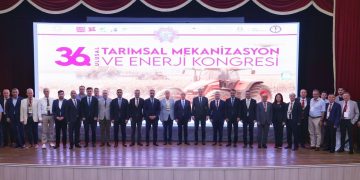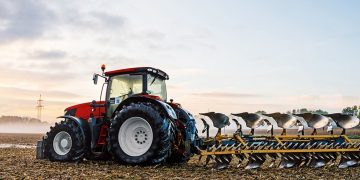Ag machinery manufacturing activity slowed in January, with various manufacturers reporting record-long lead times for raw materials, indicating that stretched supply chains continued to constrain economic activity early in the first quarter. As compared to the previous year, the rate of increase in raw materials and energy prices in the agricultural machinery industry reached 145% in steel, 127% in spheroid cast iron, 200% in plastics, 280% in energy, and labor force increased by 40% in January.
Currently, the price increase in the last one year period has been 140% in aluminum ingot, 85% in brass, 142% in stainless steel, 139% in st-37 black sheet, 104% in 1040 steel, and 100% in rubber.
Overall, a tractor comprises about 1,700 parts, and 75 percent of iron and steel products (cast iron and steel materials), and 5 percent non-ferrous metals such as copper components are used to form a complete tractor. Overall metal components make up about 80 percent of the total materials used to manufacture a tractor and over 10 percent of the remaining are plastic materials and about 5 percent are rubber polymers. Iron and steel parts in agricultural machinery other than tractors –for example, this portion can reach 100 percent in soil tillage machines.

Ex-factory prices of hot role steel (HRC), which hovered around 400 dollars/tonne in the May-June period of 2020, reached the level of 1,200 in May 2021 and eventually closed the year 2021 at the level of 840 dollars/ton. The current price of steel as of January 31, 2022 is $895/ton. Considering the dollar’s appreciation against the lira the problem is more clear. Accordingly, the HRC was 5,900 lira/tonne in January 2021, increased to 10 thousand lira in May 2021 and 14,500 lira in December 2021. In other words, steel prices have increased by 145 percent in 2021.

While this is the case with steel, there is hardly a product whose price does not increase abnormally, from plastic to copper, aluminum to rubber. The rate of increase in plastic raw materials, such as LD polyethylene, in 2021 reached 65 percent in dollar terms and 200 percent in TL terms. In the current situation, the price increase in the last year is 140 percent in aluminum ingot, 85 percent in brass, 142 percent in stainless steel sheet, 139 percent in st-37 black sheet, 104 percent in 1040 steel, and 100 percent in rubber.
Change in casting materials prices
Steel peak, which was 4,398 TL/ton in January 2021, increased to 8,767 TL in December 2021, while the ductile iron peak which was 4,695 TL/ton increased to 10,699 TL. The increase rate in the steel peak was 99 percent, and the increase rate in the ductile iron peak was 127 percent.
Change in labor wages
The last one-year increase in the cost of the minimum wage to the employer is around 40 percent.
Change in energy costs
From January 2021 to December 2021, the one-year price increase in natural gas used in industry was 276 percent and in electricity 164 percent (the kWh unit price of natural gas used in a medium-sized agricultural machinery factory operating in the OIZ changed from 0.137 TL to 0.517 TL, and the kWh of electricity unit price increased from 0.461 to 1,217 TL).
Change in finance costs
In the present form, public banks do not allow free use while giving loans to industrialists for certain payments (check, salary, tax payment, and goods purchase) with 16.25 percent. Private banks, on the one hand, provide free loans, but interest rates are at the level of 27-33 percent. On the other hand, there is a maturity interest application of up to 3-4 percent per month, especially in metal inputs. This situation causes a very high financial cost for the industrialists in the forward sales of agricultural machinery. In particular (different from common forms of purchase and payment), as in grant supports, after a proforma invoice with a price offer or machine reference lists are determined months in advance, the payment due date is uncertain (or the payment is made after 5-8 months according to the previous period experience). Demand for machinery is the most important reason for our farmers’ difficulties in acquiring agricultural machinery.














